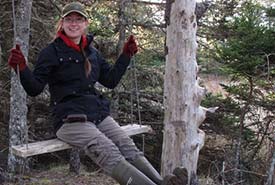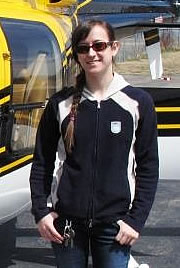Connecting with nature under COVID-19

Danielle Horne (Courtesy of Danielle Horne/NCC staff)
On the last weekend in April, I joined the City Nature Challenge 2020, an international effort to document nature in cities around the world, by taking pictures of plants and animals in my neighbourhood in Halifax.
This was my second time participating in the City Nature Challenge, and it was a bit different this year. Due to COVID-19 restrictions, I had to make my nature observations very close to home. I took a walk around the perimeter of Fort Needham, the nearest park, while keeping my distance from anyone else I saw. Using my cell phone to take pictures of the plants and wildlife I encountered, I shared them with other City Nature Challenge participants through the iNaturalist app.
I was one of more than 350 participants from the Maritimes this year — and extra keen to get outside after a long winter and weeks of isolating at home. Across the Maritimes, we identified more than 1,200 species. One of the most common observations recorded was that of the humble coltsfoot, with its cheery, bright yellow flowers easily spotted poking out of the still-brownish grasses. Less common was the American kestrel, North America’s smallest bird of prey, which flew over my head and then called for a few minutes from large trees behind some houses.
Kestrels nest in cavities in tall trees or sometimes in telephone poles. They eat insects, frogs and small birds, and are adapting to urban environments, as long as they have access to greenspaces. The large trees and wide green spaces between the row houses in Halifax’s North End are a great example of urban planning that supports nature and contributes to a vibrant healthy neighbourhood.
Other species identified by participants in the Maritimes included bald eagle, white-tailed deer, yellow-rumped warbler, honeybee and butterflies like the mourning cloak. Though it may seem surprising, butterflies have different peak flight times, and mourning cloaks have already started to emerge; sometimes you can even spot them by the end of March!
I like participating in the City Nature Challenge because as a conservation biologist with NCC, I’m always interested in seeing when species are emerging in spring and starting their migrations. Compiling data over many years is essential in identifying trends and changes in behaviour and population numbers, one of the goals of the City Nature Challenge. And the timing is perfect: I love any excuse to get outside and enjoy nature in the spring!
To learn more about City Nature Challenge, visit citynaturechallenge.org. Check out the leaderboard and find out what your “neighbour” has been seeing in your community, here.


